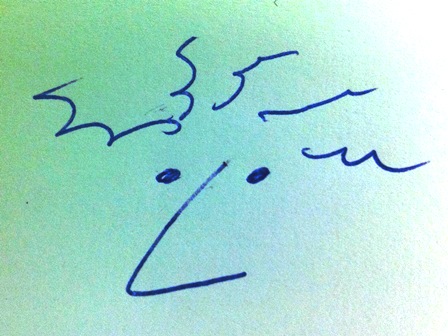

Hello, my name is Paul Gröneveld (1974), and I take the Fab Academy course in Amsterdam "de Waag" and I'm going to introduce myself here. In the picture below you will find me in the middle with my family around me. Last year I married the mother (Merel) of my three children Eva (14), Mas (10), Marte (7). Since a few month now we moved into our new house, a farm that was build by my great grandfather in 1910. There we have enough space for our dog Lulu and the five chicken. My son is now using a hatching machine to have more chicken.


Below a picture from the two different Fablabs that are used for this course.

About my work. After finishing my studies (1999) I first travelled for a year in Australia and New Zealand. I then worked for two design agencies npk design (Leiden) and Indes (Enschede). I worked on many different projects. Especially consumer products, such as safety seats for children in the car, on a bike or a Beer Draft System for home use. In a period of about 10 years I have been working on the further development of concepts into products. The so-called materialization. Later I moved to the outsourcing of molds and start-up and testing of the first productions. In 2009 I took the opportunity to work at the department for industrial product design from Saxion University of Applies Sciences in Enschede. There I had the opportunity to introduce my practical experiences in teaching modules that deal with materializing concepts. Two years ago I completed a master's of education and this way I learned a lot about designing processes in education. There is a strong comparison with the industrial design process. Furthermore, I immersed myself in models that support the materialization of products. One of them is the information structure for product design (Ashby, 2010).

Figure 1: Information structure for product design P123CMIEP (Ashby, 2010).
Because I think this model is interesting for the students of the Fab Academy, I'll explain it briefly here. If you are going to make something, little or big, does not matter, you are making decisions in the different area’s of the model. These decisions are connected to each other and have a (strong) influence on each other. F The model is not a design model, it will not help you in the development of new features, but it will help you think in alternatives in the final development of the chosen concept. In the figure above, the model is displayed graphically. There are two wings and six circles with a code. All circles are connected to each other with lines. Sometimes the lines are thick, this means there is a strong relation between the subjects. Let’s begin with the (I), this stands for the Intention with which the product will be made. This includes the economic model, the program of requirements, but also the design intent, design for "x". (....) From this Intention we see two areas. The psychological wing (right wing) and a physical wing (left wing). The psychological wing is determined by the (E) Esthetics, these are the sensorial values and the (P) Perception the designer wants to achieve. Together they determine the product personality. When the intention and product personality is clear the design engineer is more able to find good combinations in the left wing. Here decisions are made about the shape of the part (C), the material to use (M) and production processes (P123). Within the production processes there are three different groups defined. (P1) Processes to bring the material in the wanted shape, (P2) Methods to joining different parts together a (P3) Surface treatments to improve the surface properties of parts.
This whole system can be used to materialize a concept in different ways. If you would like to know more about it, please let me know.
Through my current job I am also connected to the Fablab in Enschede. Because of this connection I got the opportunity to take part in the Fab Academy 2016. For this moment I have an idea for the final project. This might change throughout the coming weeks of course. But this first idea is about bees. What is in for the bees when I think about Industry 4.0, Big Data, Connected, Smart Farming and Internet of Things? Please go to the project development to find out more. <<<< go back